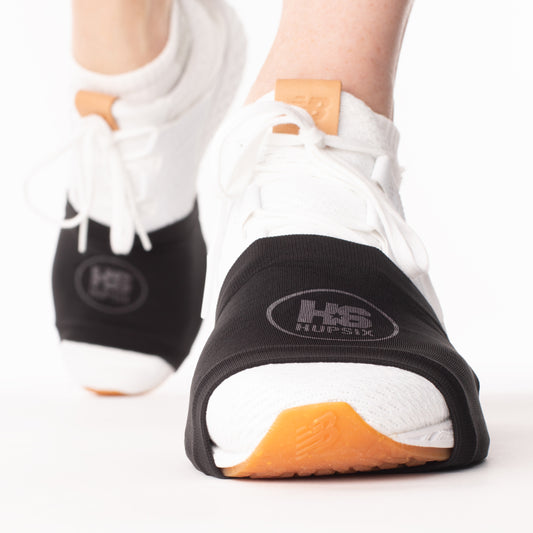
TRX vs Peloton vs Tonal vs HupSix: Which Home Workout Setup Wins?
HupSix vs TRX, Peloton, and Tonal: The Comparison That Matters
Looking for the best home workout gear? In this guide, we compare four popular options—TRX, Peloton, Tonal, and HupSix—to help you figure out which setup works best for your space, budget, and training style. Whether you want streaming classes, strength training, or a compact cardio system, we break it all down in one place. If you’re searching for the best home workout equipment for cardio, you’ll see how each option stacks up here.
HupSix
Type of Training: Cardio with Resistance + Coordination
Gear Footprint: Size of a yoga mat; no install
Electricity Needed: None
Cost (Gear + 1st Year Membership): $240 gear + $120 app = $360
Portability: Yes—no installation, easy to store
Workout Variety: Strength, cardio, rhythm, coordination
Instruction Style: Live & on-demand. Free personal feedback.
Returns: 30-day full refund. 1-year prorated return policy.
TRX
Type of Training: Strength
Gear Footprint: Anchors to door/wall/tree
Electricity Needed: None
Cost (Gear + 1st Year Membership): ~$300 + $96–$240 app = $396–$540
Portability: Yes (but setup takes planning)
Workout Variety: Mostly strength
Instruction Style: Live & on-demand.
Returns: 30 days, gear must be unused
Peloton
Type of Training: Cardio
Gear Footprint: Requires 4’ x 2’+ floor space
Electricity Needed: Yes
Cost (Gear + 1st Year Membership): $1,500–$6,000 gear + $528 app = $2,028+
Portability: No
Workout Variety: Cardio, some strength & yoga
Instruction Style: Live & on-demand
Returns: 30-day window, $150 non-refundable fee
Tonal
Type of Training: Strength
Gear Footprint: Requires 7’ wall space, wall mounting
Electricity Needed: Yes
Cost (Gear + 1st Year Membership): $4,300 base + ~$600 accessories + $720 app = $5,620+
Portability: No
Workout Variety: Strength only
Instruction Style: AI-guided on-screen
Returns: 30-day window, $250 non-refundable installation fee
👉 Related: Best Cardio Equipment Under $300 (Is HupSix Right for You?) — see how HupSix stacks up against other compact, budget-friendly cardio options.
Peloton vs Tonal: Which Works Better in a Small Space?
Peloton and Tonal are both premium systems, but they’re built for very different workouts. Peloton is cardio-first—bikes, treadmills, and rowers with live and on-demand classes. Tonal is strength-first—wall-mounted digital weight training with AI-driven coaching.
For small spaces: Peloton needs dedicated floor space and isn’t easy to move. Tonal saves floor space but requires permanent wall mounting and a nearby outlet. Both require memberships to access full functionality.
Bottom line: If you want cardio variety, Peloton wins. If you want guided strength training without racks of weights, Tonal is the better pick. For compact cardio and coordination training, HupSix is the standout choice.
FAQ
Which is better, Peloton or Tonal?
It depends on your focus. Peloton is ideal for cardio lovers. Tonal is best for strength training with built-in guidance.
Is Tonal worth it for small apartments?
Only if you can permanently mount it and have access to power. If you’re renting or move often, HupSix or TRX are more flexible.
Can I combine HupSix with Peloton or Tonal?
Yes, you can combine HupSix with Peloton or Tonal. Peloton and Tonal focus on cycling or strength, while HupSix delivers fast, music-driven cardio with agility and coordination. Together, they cover endurance, strength, and full-body conditioning in a compact, balanced setup.

Why HupSix Stands Out
More than Strength or Cardio
TRX is strong on strength. Peloton owns cardio. Tonal is high-tech strength. HupSix blends it all—resistance, rhythm, and movement—into one fun, efficient workout.
Smaller Footprint, Bigger Impact
No heavy machines. No wall anchors. No drilling. Just a 20-lb steel shot filled bag on a non-slip mat you can store under the bed. HupSix is the only system here that offers a full-body workout without taking over your home.
Smarter Spending
TRX seems cheaper, until you need a pro to install it. Peloton and Tonal can rival the cost of a used car. At just $360 for your first year, HupSix is a fraction of the price—and there’s no catch. The military grade, Made in USA gear includes a lifetime warranty, and you can pause or cancel the app anytime.
Real Movement, Real Results
Unlike machines that isolate motion, HupSix trains your whole body to move better—not just harder. You’ll build coordination, endurance, and strength all at once. It's ideal for real life, not just gym aesthetics.
Conclusion
While TRX, Peloton, and Tonal offer excellent options for the serious, everyday workout enthusiast—especially those who thrive with heavy-duty training and dedicated spaces—it’s important to recognize that many customers buy gear that’s more intense or costly than their actual consistency level supports. This can lead to wasted money and unused equipment.
Unlike the higher-priced alternatives, HupSix offers a flexible 30-day full refund and a one-year prorated return policy, plus free personal feedback through phone calls, text and email to help you stay on track. These customer-first policies reduce risk and ensure you get the support you need.
That said, HupSix isn’t for everyone. Each system has its unique strengths and fits different lifestyles and goals. In fact, many people use a combination of these products—someone might own both a Peloton and a TRX, or a TRX and HupSix, or a Peloton and HupSix, or Tonal and HupSix—to get the best of multiple worlds.
We also believe HupSix shouldn’t be the only workout you do. Instead, it’s designed to complement and enable other activities you love—whether that’s golf, tennis, swimming, or simply moving better in everyday life.
Ultimately, the best workout is the one you enjoy and stick with. We hope you find your fit, love what you do, and move well doing it.
Below is an in-depth summary of TRX, Peloton, and Tonal for those who may be unfamiliar with these popular home fitness options.
TRX: Suspension Training Anywhere

What It Is: TRX is a strength-training system built around their patented suspension straps. Over time, they've expanded their product line with weighted vests and a kettlebell-style “Y Bell,” but the suspension trainer remains their standout gear.
Where It’s Made: Originally produced in China, TRX faced issues with counterfeits being sold online. They’ve since moved some production to the U.S. to ensure quality and distinguish themselves from knockoffs.
The Gear: It’s essentially industrial-strength webbing with handles. You anchor it to a door, ceiling, wall, or even a tree. If you're installing a permanent anchor point, it's worth hiring a pro—since you're hanging your body weight from it.
How It Works: TRX uses your body weight and gravity for resistance. You adjust your angle and positioning to increase or decrease difficulty for exercises like pushups, rows, lunges, and more. While they now include yoga-inspired routines, the core focus is strength training.
Benefits: Designed by Navy SEAL Randy Hetrick during deployment, TRX was made to offer full-body training anywhere—especially in places without access to gym equipment.
Workouts: TRX offers an app with guided workouts and tutorials.
Who It’s For: TRX is best for intermediate or advanced users. Beginners should master bodyweight basics (like pushups, lunges, and planks) before adding suspension.
Cost:
• Gear: $230–$300
• App: $7.99–$19.99/month
Peloton: Cardio + Classes at Home

What It Is: Peloton offers smart bikes, treadmills, and rowing machines, paired with live and on-demand workouts for cardio, strength, yoga, and more.
Where It’s Made: Peloton manufactures mostly in Taiwan. Although they acquired U.S.-based Precor and explored U.S. manufacturing, they continue to produce most hardware overseas.
The Gear: Large cardio machines with touchscreens for streaming workouts. (One common complaint: replacement parts can take time if something breaks.)
How It Works: You need a dedicated workout space—bikes, treadmills, and rowers weigh 150–300 lbs. A bike takes up about 4’ x 2’ of floor space, and you’ll want extra clearance for comfort.
Benefits: Peloton brings the spin studio or treadmill class experience into your home. It’s especially good for cardio lovers or those with established routines.
Workouts: Choose between guided classes or solo sessions via the app (membership required).
Who It’s For: Ideal for people who already enjoy cardio workouts and want a more engaging, at-home experience. It’s a bigger investment, so consistency matters. If you fall off the routine, it can turn into expensive furniture.
Cost:
• Gear: $1,500–$6,000
• Membership: $44/month
Tonal: The Smart Strength System

What It Is: Tonal is a high-tech, wall-mounted strength training system. It uses digital weights and built-in sensors to offer personalized, AI-driven workouts.
Where It’s Made: Tonal is manufactured and assembled in Taiwan.
The Gear: Requires about 7 feet of wall space and a nearby outlet. The base unit is pricey, and you’ll also need to purchase add-ons like smart handles, a bench, bar, rope, and mounting covers—these can add several hundred dollars to the cost.
How It Works: You perform traditional strength exercises like chest presses or rows, but Tonal adjusts the resistance digitally as you move—making every rep more efficient.
Benefits: It combines compact design with smart features like form feedback, progress tracking, and personalized programs. A true all-in-one home gym—if you're okay with a 250 lb resistance cap.
Workouts: Standard strength training, guided by on-screen coaching and AI-driven adjustments.
Who It’s For: Great for tech-savvy users who want efficient, guided strength training at home—without buying racks of weights.
Cost:
• Base System: ~$4,300
• Accessories: ~$600+ depending on what you buy
• Membership: $59.95/month with a 12-month minimum commitment. Without an active membership, the equipment has limited functionality and access to workouts is restricted.
Up Next:
“Why Coordination is the Missing Link in Most Home Workouts”
Most home workouts focus on cardio or strength—but miss coordination. Learn why training your brain and body to move together is the secret to lasting results and real-world performance. 👉 Read Now



